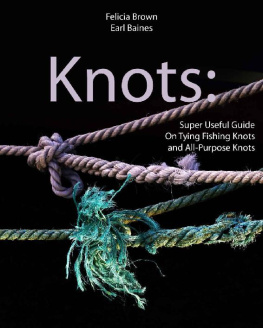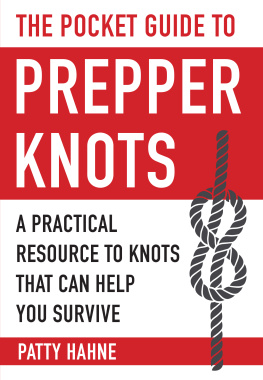Copyright 2017 by Dan Aadland
All rights reserved. No part of this book may be reproduced in any manner without the express written consent of the publisher, except in the case of brief excerpts in critical reviews or articles. All inquiries should be addressed to Skyhorse Publishing, 307 West 36th Street, 11th Floor, New York, NY 10018.
Skyhorse Publishing books may be purchased in bulk at special discounts for sales promotion, corporate gifts, fund-raising, or educational purposes. Special editions can also be created to specifications. For details, contact the Special Sales Department, Skyhorse Publishing, 307 West 36th Street, 11th Floor, New York, NY 10018 or .
Skyhorse and Skyhorse Publishing are registered trademarks of Skyhorse Publishing, Inc., a Delaware corporation.
Visit our website at www.skyhorsepublishing.com.
10 9 8 7 6 5 4 3 2 1
Library of Congress Cataloging-in-Publication Data is available on file.
Cover design by Tom Lau
Cover photo credit iStock.com
Print ISBN: 978-1-5107-1434-2
Ebook ISBN: 978-1-5107-1437-3
Printed in China
To my many equine mentors, particularly my father-in-law Elmer Johnson and my wife Emily. It was Elmer who taught me that no horseman should go through life ignorant of the bowline.
CONTENTS
INTRODUCTION: WHY KNOTS?

In an age of devices and gadgets intended to make life easier for us (but sometimes having the opposite effect), a horse lover may ask, Why knots? Why, in this day and age, is there a need for the ancient art of manipulating a piece of rope into various twists and turns to create this or that knot, hitch, or splice? Cant it all be done with buckles, snaps, and Velcro? Why take time to practice tying a bowline, a square knot, or a half hitch?
That question was answered for me many decades ago by a mare named Rosie and a mentor named Elmer (who became my father-in-law). Rosie was a powerful quarter horse mare sold to us by a young woman headed for college on a budget that didnt include continued board for the horse in a nearby city. The mare had been informally raced, had run barrels, and was well trained, she neck reined beautifully, and she lifted effortlessly from her trot to a canter she could seemingly hold all day. Lacking experience with cows, she took to them readily, and although a little quirky and spooky, she soon earned her keep on the ranch. That bay mare became the first horse I could call my own.
But Rosie had a fault. She pulled back. She was one of those inveterate pullers occasionally encountered in the equine world, and shed break anything you used to restrain her. Tie her up with halter and lead rope and shed lunge back so hard and so suddenly that somethingthe lead rope, the snap, the halter itselfwould break. And, if her halter and lead rope were stronger than the object to which she was tied, shed break the post or hitching rail. Then Rosie would calmly start grazing, making it clear what shed had in mind.
This was a serious fault for a ranch horse, and the velocity with which she threw her twelve hundred pounds backward also made it a danger, both to herself and to anyone or anything behind her. How would I keep her in one place while I set irrigation water or fixed fence? In the open West, failing to hold onto your horse can mean a long, hot walk home.
Elmer had seen a few horses spoiled in this fashion and said wed try to cure her, though he was dubious about the result. He explained that someone had tied her poorly while she was a colt. Shed probably spooked, pulled, broken free, found reward in tasty nearby grass, then tried it again, eventually finding that if she pulled hard enough, something would break and release her. (I have to wonder what Elmer would have thought of the breakaway tying systems marketed today that actually train a horse to be rewarded by pulling backbut thats another story.)
Im thinking that if she once came up against something she absolutely could not break, maybe shed figure it out and quit. Im not too hopeful, but well give it a try. With that, Elmer got into the Jeep and headed for town, while I continued my barn chores. He soon returned and displayed a coil of -inch nylon rope. There isnt a horse alive that can break this stuff. You can pull a pickup out of the barrow pit with it.
But do we have a halter strong enough?
We wont use one. Well tie it around her neck. I had visions of a strangling horse, and Elmer read my mind. Ill use a bowline, and thats the only knot that wont tighten up and will still allow us to get it untied, no matter how hard she pulls. Id heard of bowlines, probably reading of such a knot in the books in the seafaring section of the county library, all of which Id read. But I didnt know how to tie one.
Elmer tied the soft, braided nylon rope around Rosies neck, his fingers fluid, the motion too quick for me to follow construction of the knot. Then he led Rosie to a snubbing post in the middle of the corral, a post made of a railroad tie set deeply into the ground. After he tied another bowline around the post, we both stepped back. Rosie stood there a few seconds, backed slightly until slack was gone from the rope, then exploded. Dust flew while she snorted, strained, and repeatedly threw her weight and muscle back against the unyielding nylon rope.
But Elmer, soft-hearted man that he was, couldnt stand it. After fifteen or twenty seconds, he slipped in quickly with his pocket knife and cut the rope. I couldnt watch her do that. Shed have pulled every muscle in her body. Youll have to use the hobbles, Dan.
I watched as Elmer untied the rope from around Rosies neck, amazed that he could so easily untie a knot that had just withstood repeated lunges from a heavy animal, and amazed, too, that the noose hadnt tightened the slightest bit. It was clear Elmer had cut the rope only for his safetyhe didnt want to be between a thrashing animal and the snubbing post.
No, we didnt cure Rosie. Luckily, she was a sucker for hobbles, never learning to hop or run in them as some horses do. I could slip the rawhide hobbles on her front pasterns, fix fence or do some other chore, and shed graze nearby, moving at most with baby steps.
But I learned to tie a bowline. Without it, how could I safely tie a horse that had lost its halter? How could I tie a rope to the front axle of the tractor to pull it out of the mud and still be able to untie the knot rather than ruin the rope by cutting it loose? The Rosie incident had made it clear to me that horsemanship consists of more than handling a horse in a round pen. Rope skills, knowledge of the sort Elmer possessed, are a side of the picture too little taught by modern clinicians.
In this book, well explore some of the ways knots can make life easier and safer in handling horses. Instead of attempting to learn a vast quantity of them ( The Ashley Book of Knots contains some four thousand!) well concentrate on some of the really useful ones, because over the years Ive learned that we tend to retain only the ones we use. Well learn to recognize a good knota knot that holds but can be untied after pressureand well look into the world of hitches (systems for packing items onto a horse) and splices (useful ways of joining ropes and creating loops). After that, its a matter of practice, frequently tying the knots weve learned and looking for more ways to apply them.














